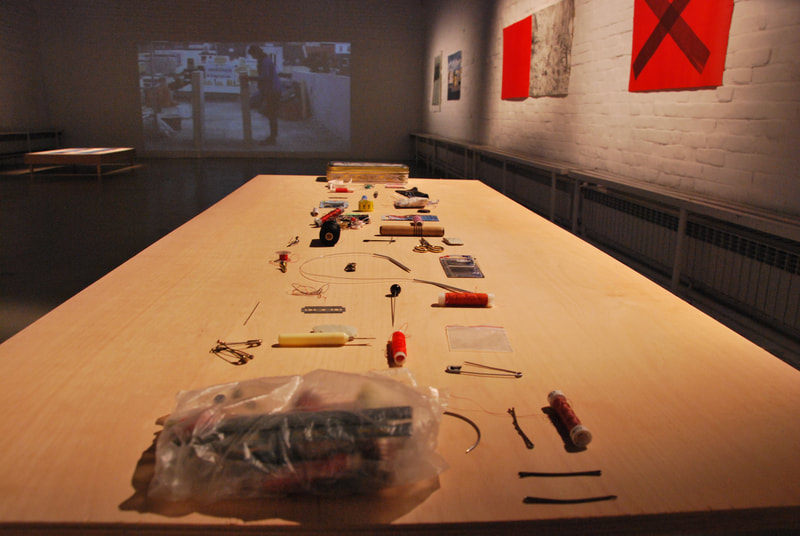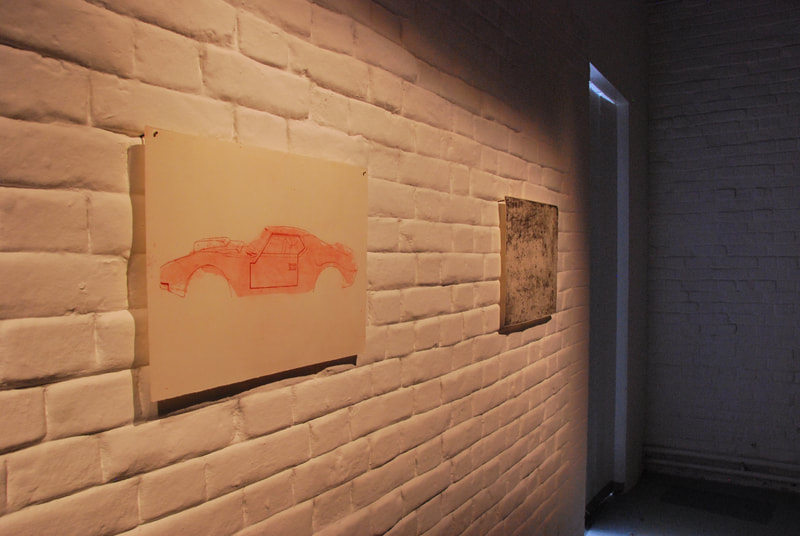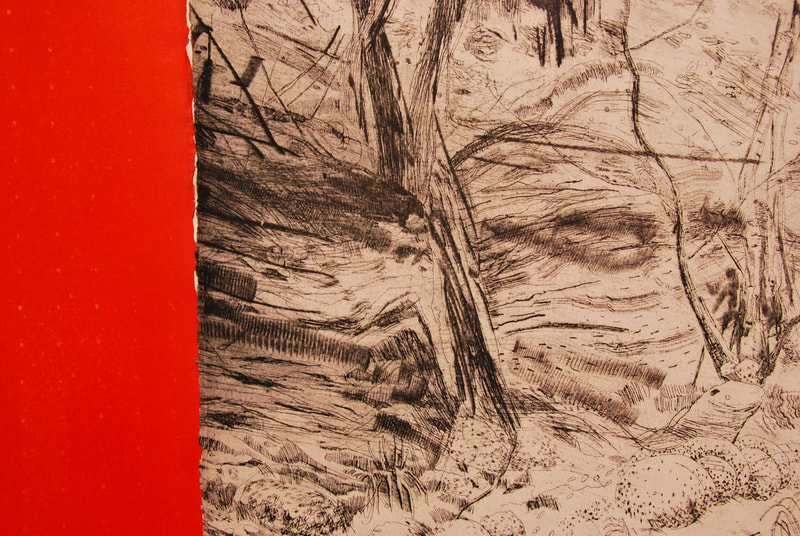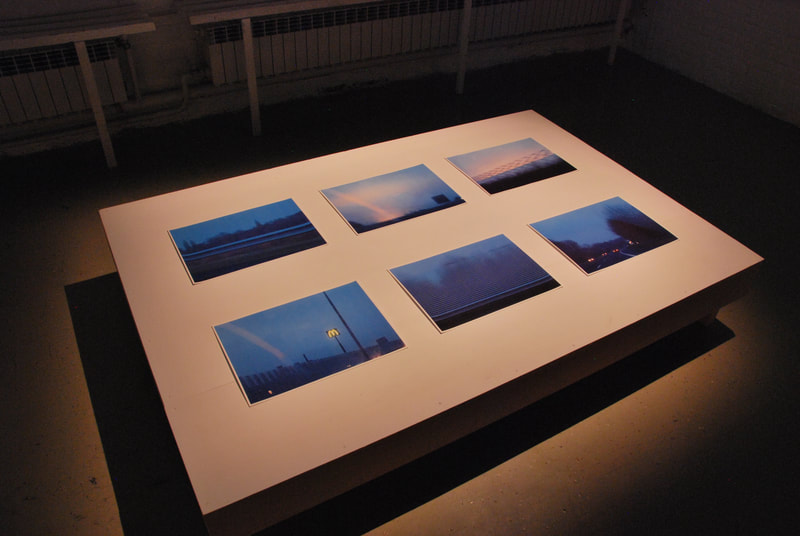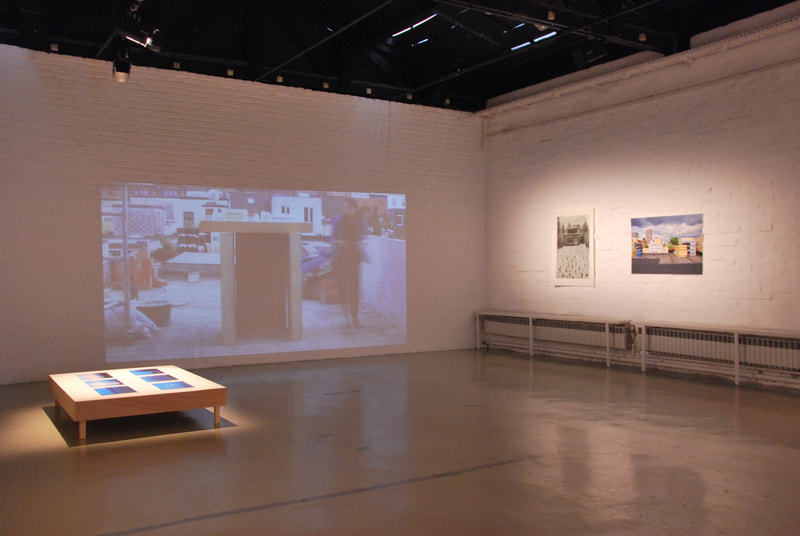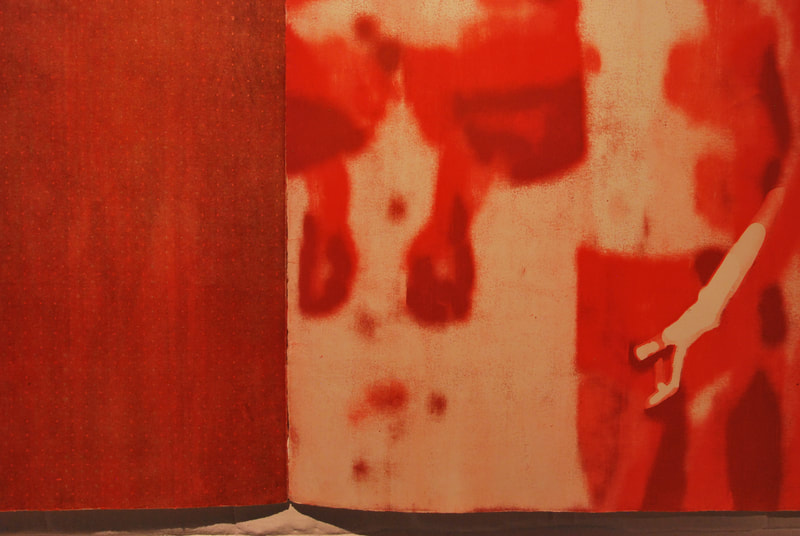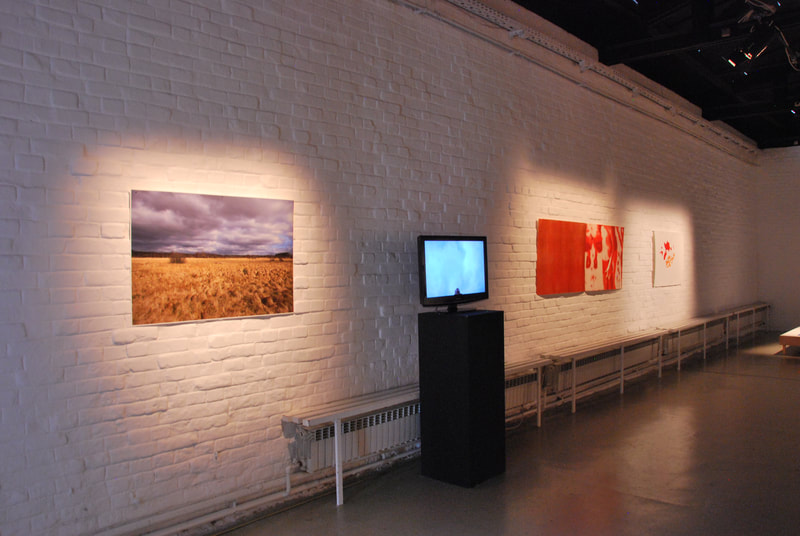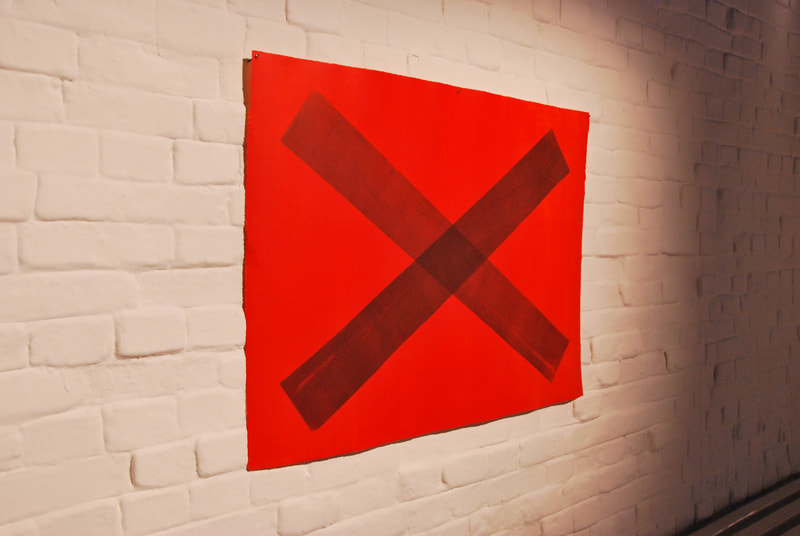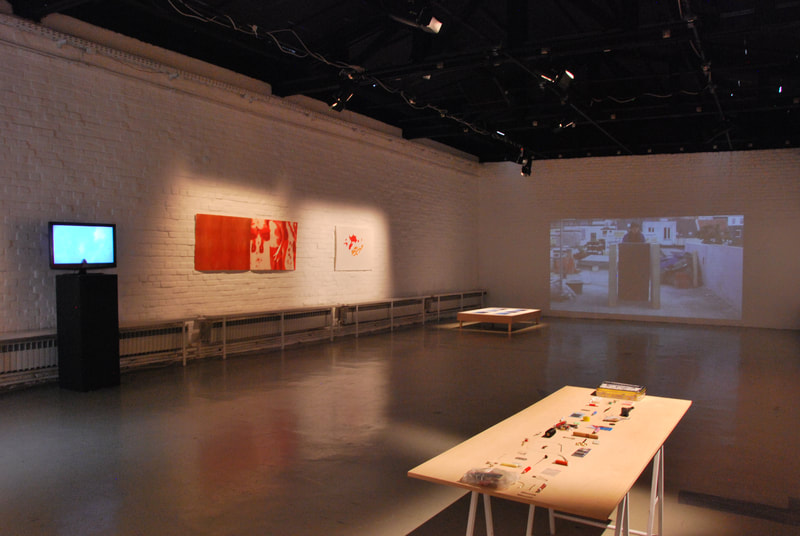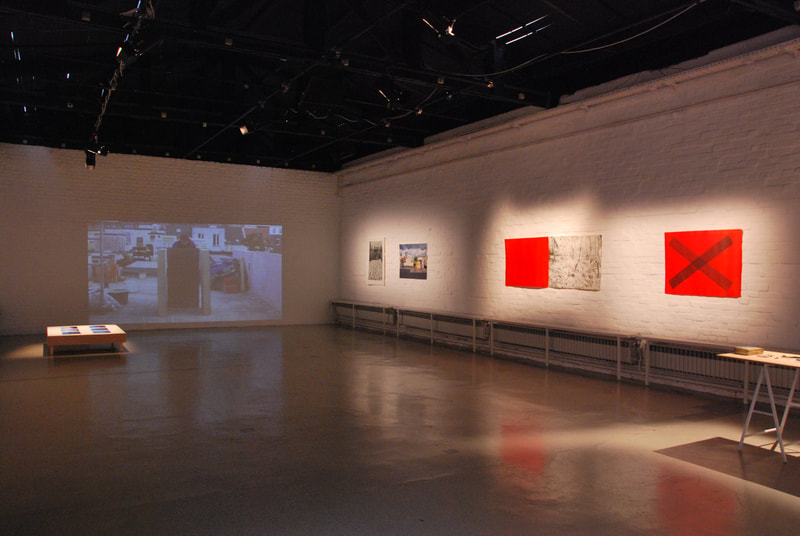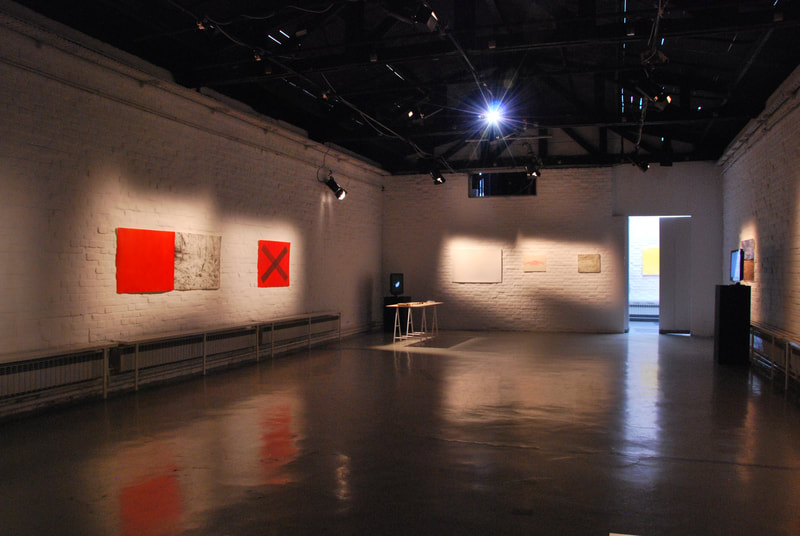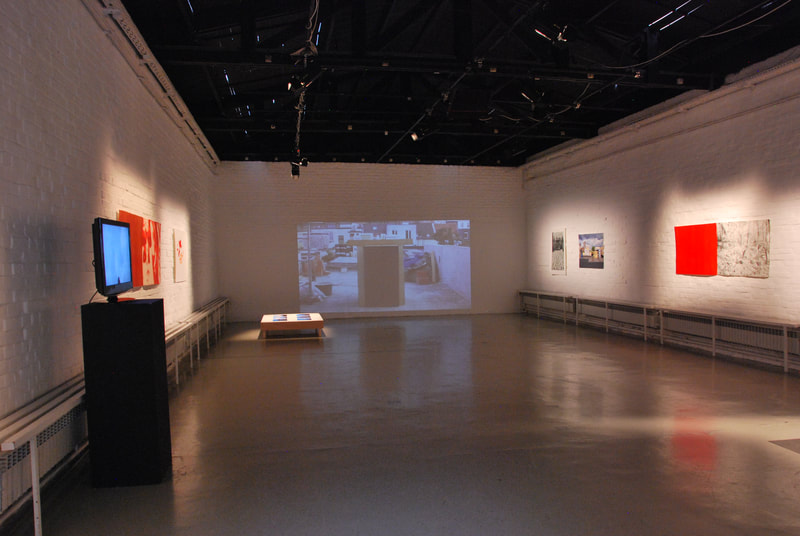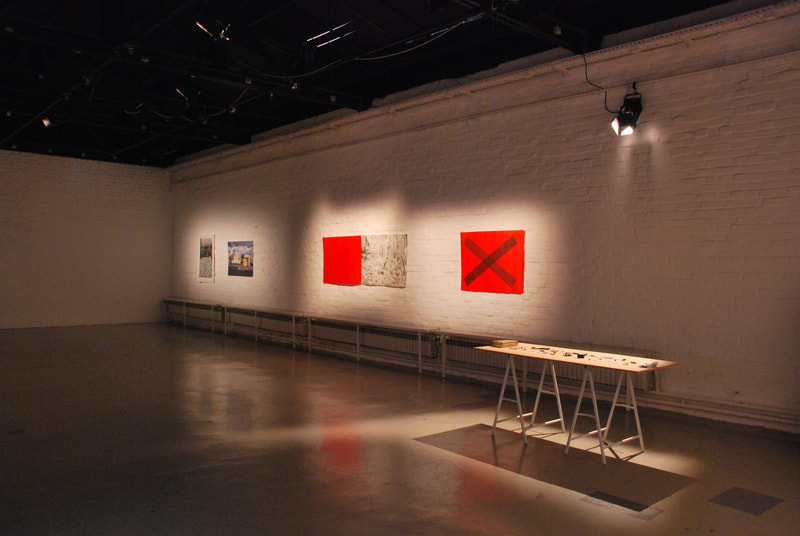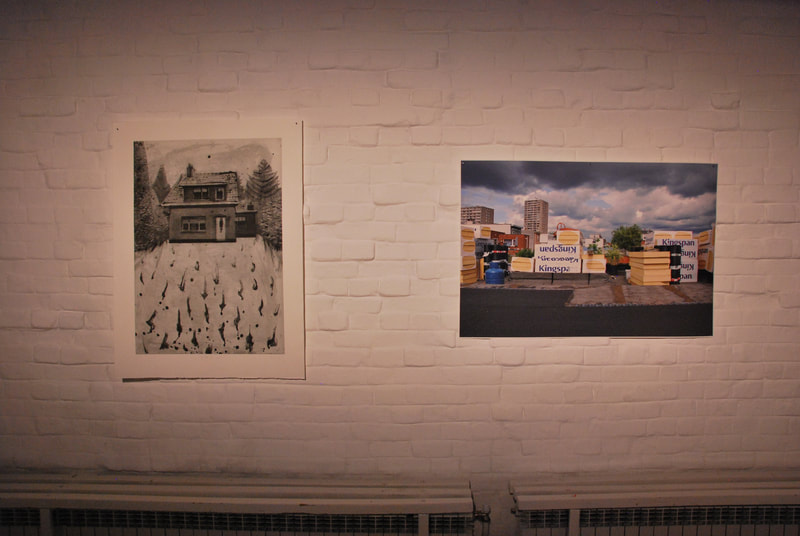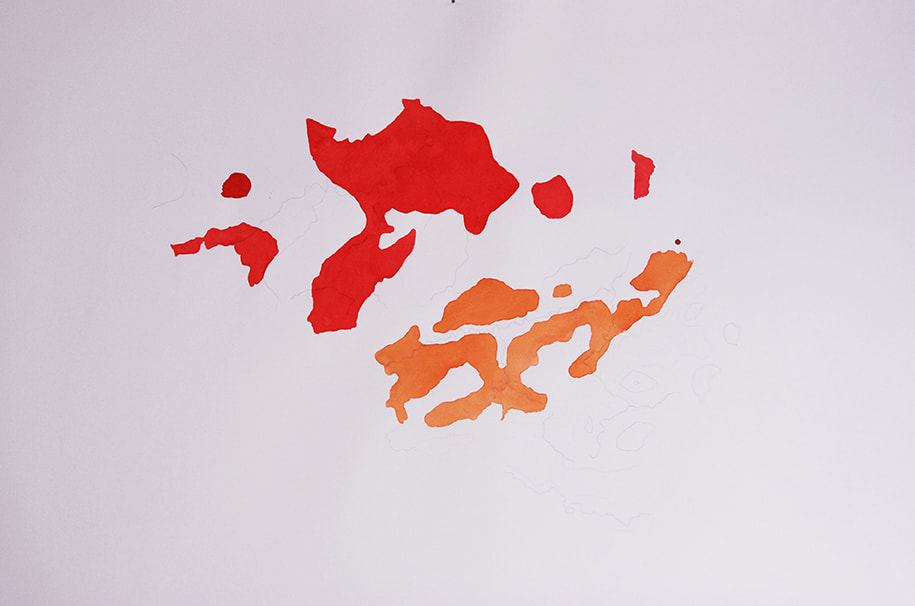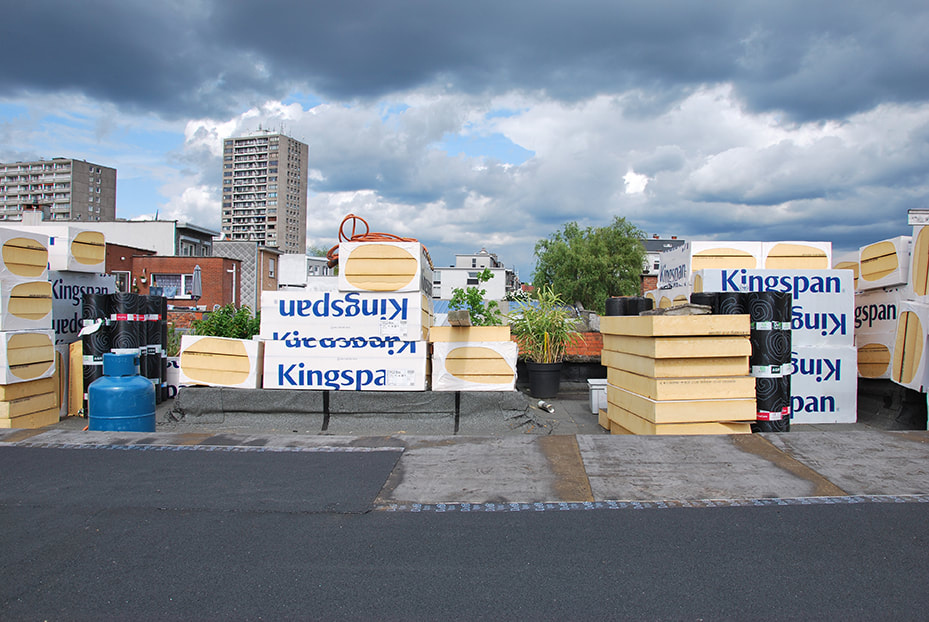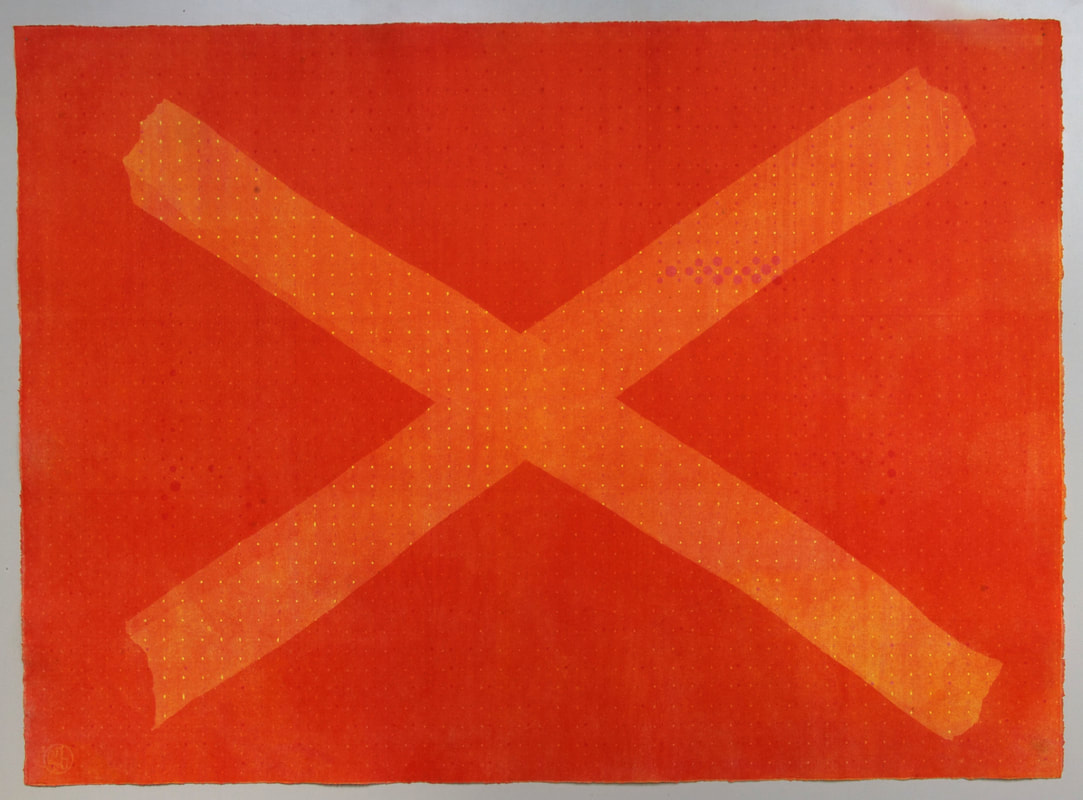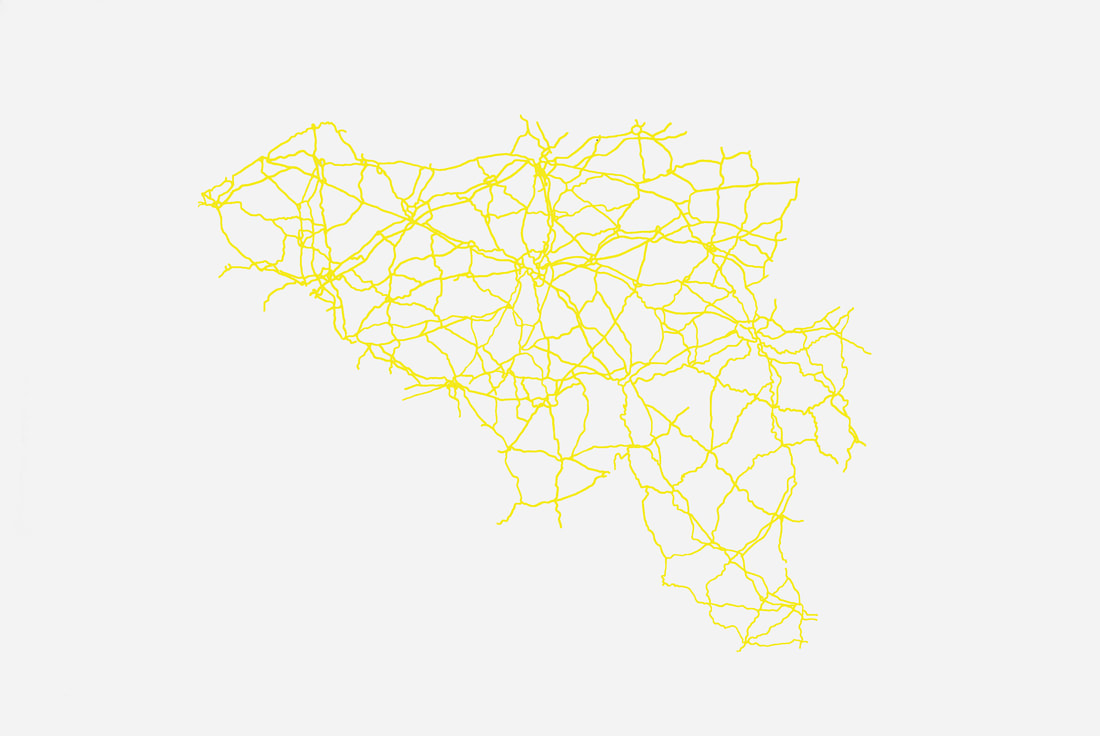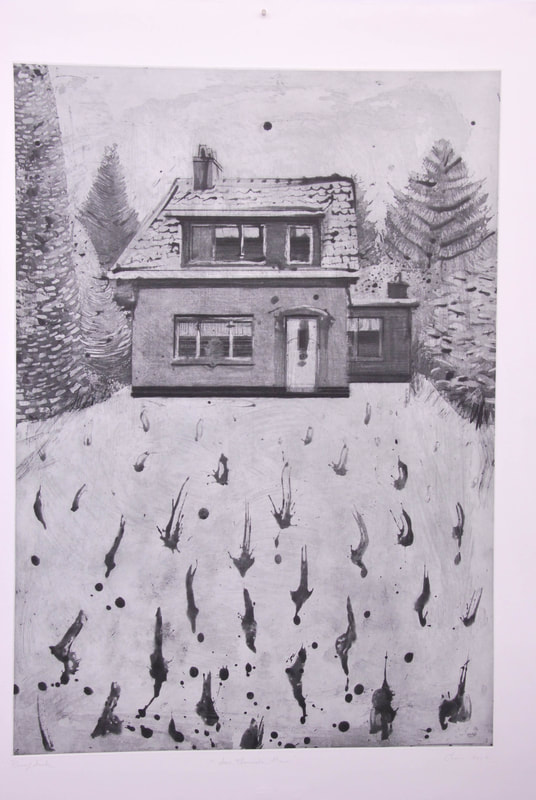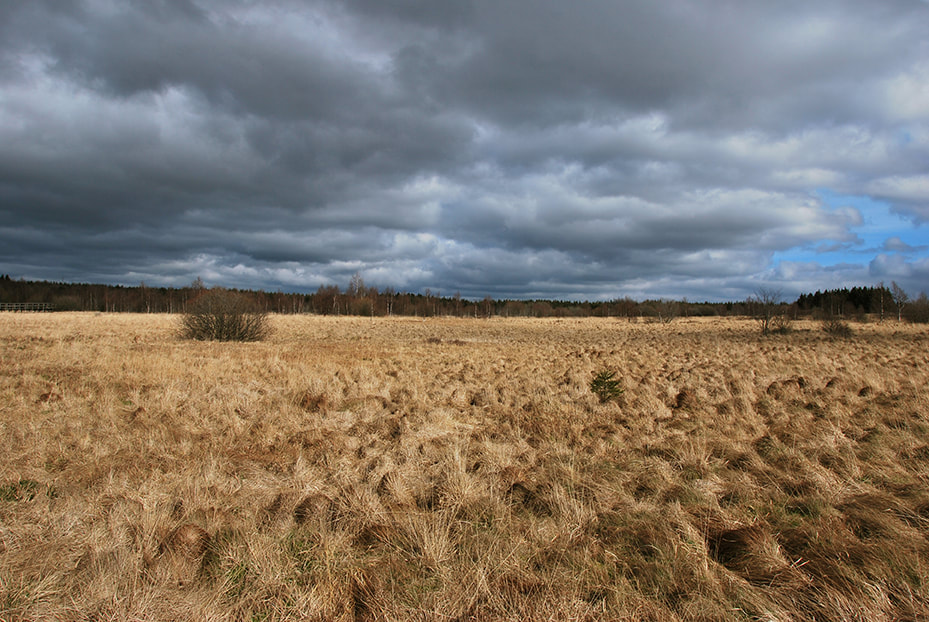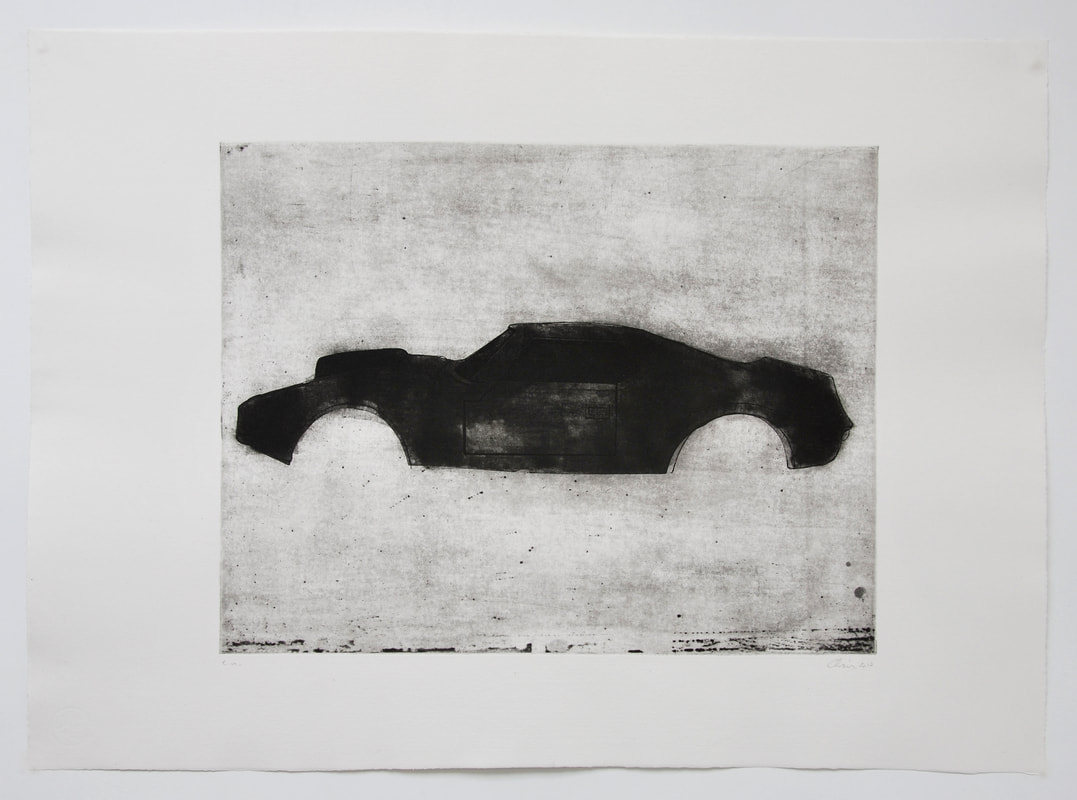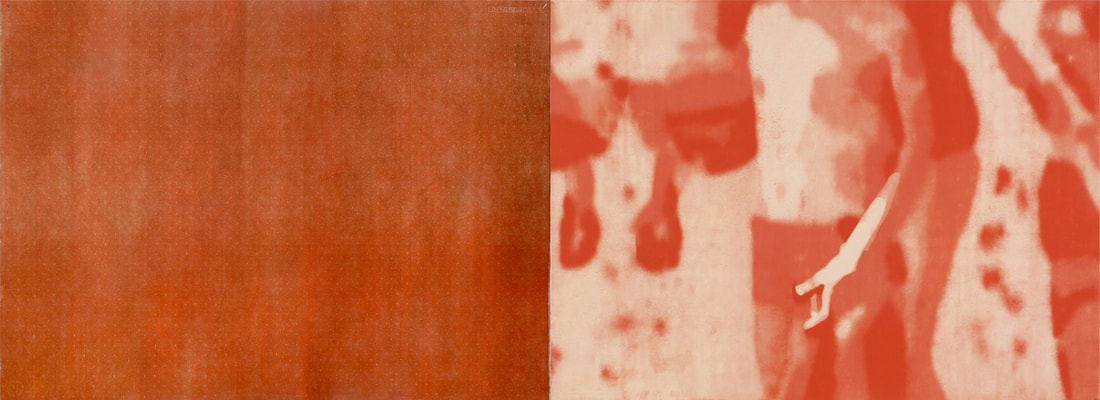LAND OF MILK AND HONEY |
In collaboration with Chris Van der Veken
|
Predgovor za izložbu u Galeriji SC, 2019.
Piše: Jozefina Ćurković
Fraza U zemlji meda i mlijeka kolokvijalno se upotrebljava u opisivanju mjesta koje karakteriziraju izuzetno povoljni životni i radni
uvjeti te opća propulzivnost. Ipak, u osvit globalne klimatske i političke krize i rastakanja mita o tzv. državi blagostanja, u ovaj izraz
bez iznimke upisujemo pejorativno značenje. Konotiranje izložbe na takav način daje naslutiti da se u ovom umjetničkom procesu
kulturni stereotipi, kao diskurzivne tvorevine s pripadajućim simboličkim teretom, testiraju i dekonstruiraju, ustupajući mjesto
višeznačnim i potencijalno subvertivnim tumačenjima. Prihvaćajući se nekoliko općih mjesta iz repertoara predodžbi o jednom
geografskom prostoru - u ovom slučaju Belgiji - Andrea Zrno i Chris Van der Veken ukrštavaju svoje perspektive u vizualnom dijalogu
o dijeljenom životnom prostoru. On se temelji s jedne strane na istraživanju različitih dimenzija vlastitog iskustva kulturno-geografske
izmještenosti i tapkanju u relativno nepoznatom - s uvijek prisutnim pogledom unatrag, na ono poznato - a s druge na interpretaciji
odabranih tema iz rakursa onoga koji ih iskustveno (pre)poznaje i u većoj ili manjoj mjeri osjeća kao svoje.
Krećući od općeg ka pojedinačnom, osobnom iskustvu, umjetnici propituju održivost normativnih sustava pojednostavljenog znanja i
obrazaca življenja. Gradacijom motiva u radu 2. 2 million bulbs and one more - od linijskog crteža primarnom bojom, koji predstavlja
shematski prikaz osvijetljene mreže prometnica, preko intimističkog prizora memorabilije iz djetinjstva, do video snimke objekta s
pozadinskim zvukom prometa u koji je upisan snažan osjećaj frustracije (ulične svjetiljke koja se nalazi pod prozorom obiteljske kuće
umjetnika) – umjetnici razlamaju i očuđuju utjecaj umjetnog osvjetljenja na svakodnevni život. ‘Osobna’ ulična svjetiljka tako
predstavlja supstrat generalne pretjerane osvijetljenosti i izloženosti pogledu.
U radu Kuća umjetnici se poigravaju belgijskom izrekom prema kojoj Svaki belgijanac nosi ciglu u želucu, što hoće reći da je čovjekova
želja za kontinuiranom izgradnjom i napretkom uvjetovana njegovim nacionalnim identitetom. Jukstapozicija prikaza karakteristične
flamanske kuće i videoperformansa u kojemu umjetnica gradi improvizirano sklonište - kuću od sirovog materijala kojime su bili
okruženi tijekom građevinskih radova u vlastitom domu - rezultira humornim diptihom čija simbolika nadilazi puku dihotomiju teorije i
prakse ili općenitog i individualnog. Na sličan način umjetnici uranjaju u ljetni dan proveden u ljetovalištu Westende. Uvećani detalj u
sugestivnoj vibrantno crvenoj boji prati svojevrsna legenda koja upućuje na to da se i poimanje ljetovanja i ljeta mijenja s geografskom
izmještenošću. Jednako tako, najviša točka u Belgiji (Hoge Venen) za Zrno je tek pozicija s koje promatra jednolično sivo nebo koje
je projicirano, dok fotografija koja je sastavni dio rada prikazuje i krajolik, upućujući tako na značajan dio ambijenta koji umjetnica
nesvjesno ispušta iz svoje vizure.
U zaključku istraživanja uvjeta postojanja u određenom prostornom kontekstu, autori interpretiraju političku situaciju u zemlji
definiranu separatističkim tendencijama u njezinim dvjema regijama. Tako nas posljednja etapa ovog vizualnog eseja vraća na
početak, pokazujući jasno da je mitologem zemlje meda i mlijeka neodrživ i itekako podložan kontingenciji pogleda. Dok s jedne
strane sustav države-nacije opstaje upravo zahvaljujući afirmaciji stereotipa (nužnih prije svega radi svoje mobilizacijske funkcije),
unutar tog istog kompleksa događa se razdor. Umjesto da osigura restrukturiranje problematičnih obrazaca upravljanja, mogućnost
rascjepljenja Belgije na dvije autonomne regije perpetuira podijeljenosti i polariziranu društveno-političku klimu, te je upravo ovaj
paradoksalni proces u fokusu rada Part II of Belgium on Fire.
Susreti i odmicanja u percepciji s dvaju motrišta naglašavaju se različitim medijima ali i prevladavajućim spektrom boja. Ipak, pozicije
u umjetničkom dijalogu nisu kategorički proturječne - radi se tek o dvjema optikama specifičnih figura iz kulturnog imaginarija jedne
nacije. Od naizgled benignih pitanja, kao što su poimanje ljetnog odmora i odnos prema javnoj rasvjeti, do onih kompleksnijih koji se
tiču stanja izmještenosti i nesigurnosti ili neizvjesnosti političke situacije u zemlji, izložba u cjelini sugerira pomak od esencijalističkog
tumačenja (nacionalnog) identiteta kao stabilnog, fiksiranog i nepromjenjivog ka afirmaciji njegove poroznosti, fragmentiranosti i
nedovršenosti.
Mjesto gdje apsurd živi punim plućima
Kroz dva sup(r)otstavljena glasa, izložba Zemlja meda i mlijeka prikazuje fluidne perspektive iz kojih autori različitog porijekla dekonstruiraju dijeljenu svakodnevicu.
Piše: Mirna Rul
"…this ain't no lan' of milk an' honey like the preachers say."
John Steinbeck, The Grapes of Wrath
"Idite iz zemlje svoje, iz zavičaja i doma očinskog, u krajeve koje ću ti pokazati", rekao je prema Knjizi postanka Jahve Abrahamu, uputivši ga da "izabrani narod" izbavi iz egipatskog ropstva i povede Izraelce u Kanaan, obećanu zemlju – zemlju u kojoj teku med i mlijeko. Starozavjetnom sintagmom poslužili su se Andrea Zrno i Chris Van der Veken u nazivu multimedijalne izložbe Zemlja meda i mlijeka održane u Galeriji SC, no "obećana zemlja" u njihovu slučaju nije Izrael već Belgija, pri čemu dvoje umjetnika, ujedno i životnih partnera, tu zemlju promatra iz bitno različitih rakursa. Naime, Van der Veken rođeni je Belgijanac, dok se Zrno ondje doselila prije šest godina. Prvi Belgiju vidi punu živih boja i nijansi, dok je našoj emigrantici ona sva siva, tmurna, hladna i – prije svega – strana. Odlučivši ovom izložbom zemlju u kojoj žive prikazati kroz njene tipičnosti, barem kako ih oni sami subjektivno doživljavaju, autori ulaze kako u međusobni dijalog, tako i u onaj s posjetiocima izložbe, ostavljajući im konačan sud o tome je li zaista riječ o zemlji u kojoj teku med i mlijeko.
Postav izložbe stavlja radove dvoje autora u kontrapunkt, bez legendi i naziva i bez eksplicitne naznake tko je autor kojega, čime je potencirana fluidnost perspektive kao i hibridna forma izložbe, ističući ipak zajednički stav kako je riječ o zemlji u kojoj "apsurd živi punim plućima, a kontrast je dio svakodnevice". Upravo ovakva kontrapunktna tehnika pripovijedanja najznačajnija je forca izložbe Zemlja meda i mlijeka i ono što je izdvaja od nekih sličnih projekata koji se na ovaj ili onaj način bave temom iseljeništva ili pak memorijama određenih geografskih lokacija. Polifonija se manifestira kroz prisustvo dva (naizgled) suprotstavljena glasa te onog potencijalnog – promatračevog – čija je svrha dokidanje uloge sveznajućeg pripovjedača te otvaranje prostora za "teorijski nedovršiv dijalog lišen završne riječi i samim tim nepodložan jedinstvenoj interpretaciji". Uloga je polifonijskog pripovijedanja, prema Bahtinu, rastvaranje objektivne stvarnosti, a Zrno i Van der Veken belgijsku stvarnost dekonstruiraju bez namjere da je hvale ili kritiziraju. Oni je tek promatraju, evidentiraju i prezentiraju kao otvoren konstrukt unutar kojeg odbijaju zauzeti poziciju autora kao neprikosnovenog semantičkog autoriteta.
Ipak, teško je u nazivu izložbe ne iščitati ironiju koja, tematski, priziva onu iz Steinbeckovih Plodova gnjeva. Kao što su Steinbeckovi junaci u vrijeme Velike depresije i nestašice posla odlučili napustiti imanje i uputiti se u Kaliforniju koju su, idealizirajući je, doživljavali kao obećanu zemlju, tako su i emigranti iz istočnoeuropskih zemalja percipirali Zapad, kamo su odlazili u potrazi za nekim boljim životom. Naravno, u romanu se ispostavlja da je Kalifornija daleko od "zemlje meda i mlijeka", kao što se nerijetko dešavalo i da su domaći emigranti, suočeni s realnošću, izgubili ideale o obećanoj zemlji na Zapadu.
U radu Bakina kutija Andrea Zrno izlaže sadržaj stare metalne kutije koja je nekada pripadala njenoj baki. Riječ je o šivačem priboru – škarama, koncima i pribadačama – a auru nečega što nadilazi njihovu uporabnu svrhu daje im činjenica da je kutija, sada u vlasništvu unuke, nakon bakine smrti prešla put od Njemačke do Belgije. Naime, i baka je, poput svoje nasljednice, napustila dom pronašavši novi u zemlji koja je za Hrvate tradicionalno predstavljala onu obećanu. A kako se u Flandriji ne bi osjećala strankinjom, Zrno od izolacijskog materijala koji se tijekom mjeseci renovacije nalazio na krovu njihove zgrade, odlučuje sagraditi primitivnu "kuću". Ovaj pokušaj "asimilacije" dokumentira u radu pod nazivom Kuća, u kojem se referira na poslovicu kako je svaki Belgijanac rođen s "ciglom u želucu" ("elke Belg wordt geboren met de baksteen in de maag"), odnosno s cjeloživotnom potrebom za građenjem, nadograđivanjem i renovacijom svojih nekretnina. Belgijska predgrađa prepuna su čudnovatih zdanja, dok je građevinski materijal moguće vidjeti u brojnim dvorištima kako čeka vikend, kad građevinske intervencije dobivaju puni zamah. Živopisne nastambe, nastale kao rezultat ovih akcija, umjetnicu ipak čine nešto manje nostalgičnom, podsjećajući je na slične primjere divlje gradnje u domovini.
S druge strane Andrein partner, belgijski umjetnik Chris Van der Veken kao da promatrajući belgijska predgrađa ne koristi iste naočale, izlažući grafiku idilične atmosfere koja prikazuje tipičnu flamansku kuću s velikom okućnicom okruženu šumom. Da smo ponekad kratkovidni kada su u pitanju situacije ili stvari uz koje smo sentimentalno vezani, čitamo i u radu 2.2. million bulbs and one more. Sastoji se od crteža žutim flomasterom koji predstavlja tlocrtni prikaz autocesta u Belgiji, fotografija objekata čije su fasade okićene neonskim reklamama, akvatinte koja prikazuje metalni autić, autorovu omiljenu igračku iz djetinjstva te video rada koji u loopu "vrti" snimku ulične lampe koja se nalazi tik do prozora spavaće sobe umjetničkog para. Prilikom spomenute renovacije kuće, od grada Antwerpena zatraženo je uklanjanje svjetiljke, no zahtjev je odbijen, a cijela je priča završila pomicanjem svjetiljke tek nekoliko centimetara dalje od njene prvotne pozicije.
I dok umjetnica progovara o problemima svjetlosnog onečišćenja u ovoj zemlji, koje se najekstremnije očituje duž belgijskih prometnica – osvijetljene su ogromnim brojem rasvjetnih tijela, zbog čega, promatramo li Europu noću iz zraka, ovu zemlju jedinu jasno uočavamo – asocijacija njenog partera na belgijske ceste je autić iz sedamdesetih godina, vremena njegova djetinjstva. Slična kontrapunktna tehnika dolazi do izražaja i u radu pod nazivom Westende, u kojem je riječ o poznatom flandrijskom ljetovalištu. Umjetnik se prisjeća ljeta, kupaćih kostima i topline koju potencira upotrebom crvene i narančaste boje, dok umjetnica u "svom dijelu" rada – karti Belgije – koristi iste boje kako bi istaknula dijelove zemlje s najvišim prosječnim temperaturama. One iznose 10-12 stupnjeva, čime na duhovit način daje do znanja kako se ljetovanje na Sjevernom moru iz njene perspektive ne doima odveć primamljivo.
Emocije utječu na formiranje memorija o nekom prostoru i vremenu te predstavljaju katalizatore u kreiranju stavova i sjećanja, zbog čega je razumljiv različit diskurs dvoje umjetnika. Memorije određenog mjesta isprepliću se s onim osobnim, a umjetnikov je diskurs neminovno obilježen onime što Svetlana Boym naziva refleksivnom nostalgijom – sviješću o "čežnji i gubitku, nesavršenim procesom sjećanja". Refleksivna je nostalgija, u svojoj suštini, kreativna, autoironična i retrospektivna, te iako na prvi pogled predstavlja čežnju za nekim određenim prostorom, ona je zapravo "odbijanje prepuštanja ireverzibilnosti vremena". Riječ je o urbanom odnosno globalnom fenomenu u kojem grad postaje "mjesto osporavanog sjećanja, platno na koje domaćini i pridošlice zajedno projiciraju kaleidoskopske iluzije autentičnosti". Drugi je tip nostalgije onaj restorativan, koji predstavlja temelj rekreiranja religioznih i nacionalističkih rituala, a Van der Vekenov rad Part II of Belgium on Fire predstavlja kritikuupravo takvih nacionalističkih težnji. Riječ je o triptihu koji se kritički osvrće na težnje za razdvajanjem Flandrije i Valonije kao mogućim rješenjem napetih političkih odnosa, a crvena boja i naziv rad ukazuju kako je riječ o gorućem problemu ove zemlje, u kojoj separatističke težnje ne jenjavaju.
Hoge venen samostalni je rad Andree Zrno i predstavlja svojevrsni komentar izložbe, njen pogovor i/ili predgovor, kojim sutorica zaokružuje ovu "biokularnu" priču. Rad se sastoji od videa i fotografija u kojima dominira sivo nebo snimljeno u blizini njemačke granice, na najvišoj točki Belgije s koje autorica promatra bakinu "zemlju meda i mlijeka". Iako Zrno uočava apsurdnost činjenice da se najviši vrh Belgije zapravo nalazi na 694 m nadmorske visine, tj. u ravnici, uspoređujući ga s gotovo trostuko višom Dinarom, njen pogled nije uperen prema Hrvatskoj. I premda je promatračima jasno kako ironijski momenti ove izložbe izviruju, gotovo na nesvjesnoj razini, upravo u usporedbama s domovinom, o idealizaciji i sentimentalnosti u njenim radovima nema govora, dok se refleksivna nostalgija čita tek između redova.
"Prijelom u mojoj sudbini omogućio mi je kasnije sinkopalni užitak kojeg se ni za što na svijetu ne bih odrekao", piše Nabokov u svom djelu Govori, sjećanja, govoreći o egzilu u Ameriku. Odlaskom i defamilijarizacijskom perspektivom koja se neminovno rađa u migracijskim procesima, dobiva se nova perspektiva pri promatranju, kako prostora koji se napušta, tako i onog kamo se dolazi, a ambivalentnost ovakvog bivanja omogućuje ironijski odmak i karakterističan pogled "iskosa". Efekt bivanja "ni na nebu ni na zemlji" proizlazi iz suvremene nostalgije, onakve kakom je vidi Svetlana Boym – istovremene čežnje za domom i muke od bivanja ondje.
